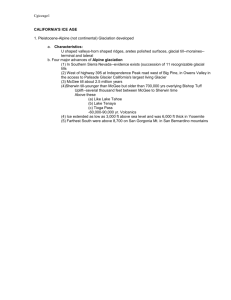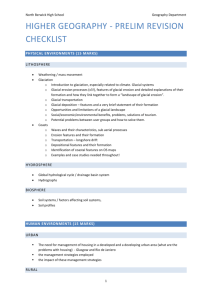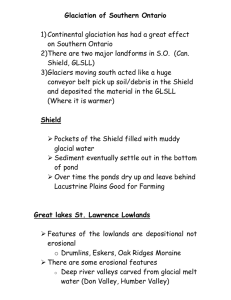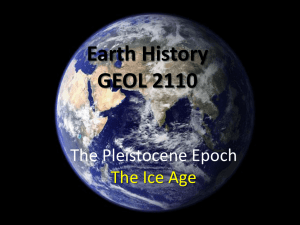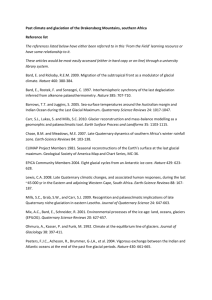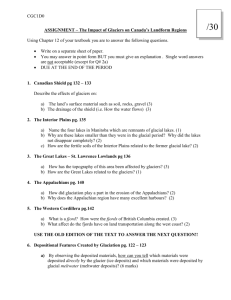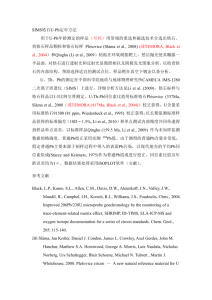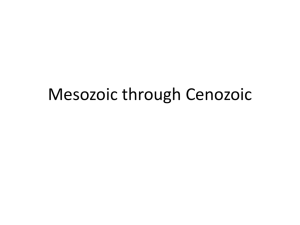Material properties and microstructure from
advertisement
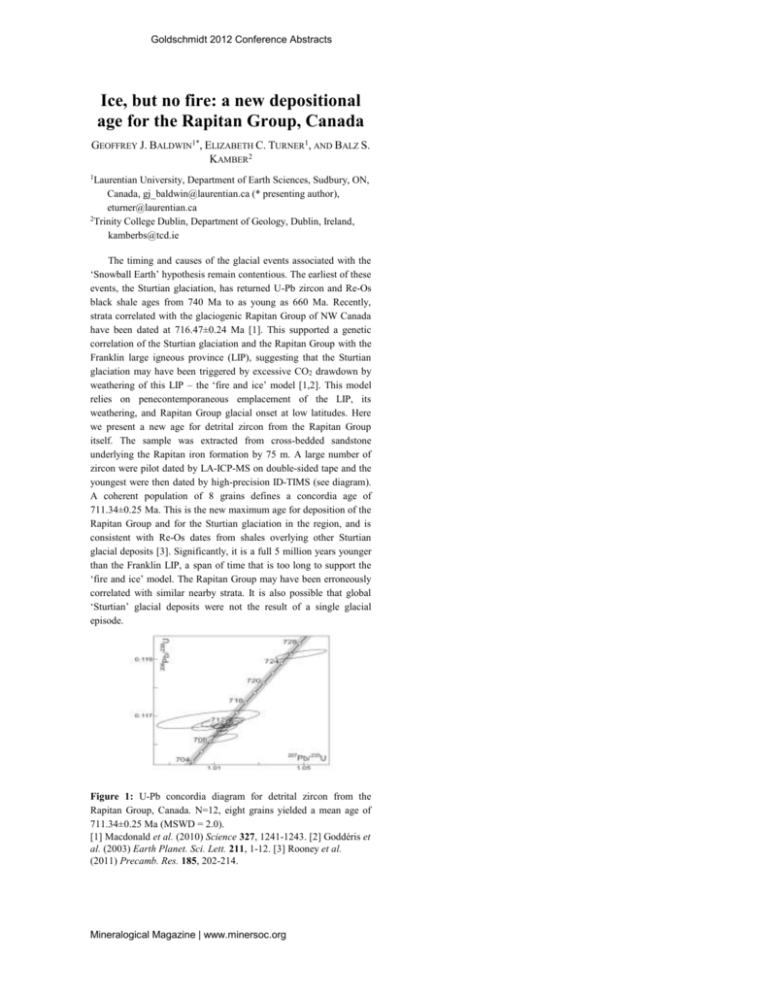
Goldschmidt 2012 Conference Abstracts Ice, but no fire: a new depositional age for the Rapitan Group, Canada GEOFFREY J. BALDWIN1*, ELIZABETH C. TURNER1, AND BALZ S. KAMBER2 1Laurentian University, Department of Earth Sciences, Sudbury, ON, Canada, gj_baldwin@laurentian.ca (* presenting author), eturner@laurentian.ca 2Trinity College Dublin, Department of Geology, Dublin, Ireland, kamberbs@tcd.ie The timing and causes of the glacial events associated with the ‘Snowball Earth’ hypothesis remain contentious. The earliest of these events, the Sturtian glaciation, has returned U-Pb zircon and Re-Os black shale ages from 740 Ma to as young as 660 Ma. Recently, strata correlated with the glaciogenic Rapitan Group of NW Canada have been dated at 716.47±0.24 Ma [1]. This supported a genetic correlation of the Sturtian glaciation and the Rapitan Group with the Franklin large igneous province (LIP), suggesting that the Sturtian glaciation may have been triggered by excessive CO2 drawdown by weathering of this LIP – the ‘fire and ice’ model [1,2]. This model relies on penecontemporaneous emplacement of the LIP, its weathering, and Rapitan Group glacial onset at low latitudes. Here we present a new age for detrital zircon from the Rapitan Group itself. The sample was extracted from cross-bedded sandstone underlying the Rapitan iron formation by 75 m. A large number of zircon were pilot dated by LA-ICP-MS on double-sided tape and the youngest were then dated by high-precision ID-TIMS (see diagram). A coherent population of 8 grains defines a concordia age of 711.34±0.25 Ma. This is the new maximum age for deposition of the Rapitan Group and for the Sturtian glaciation in the region, and is consistent with Re-Os dates from shales overlying other Sturtian glacial deposits [3]. Significantly, it is a full 5 million years younger than the Franklin LIP, a span of time that is too long to support the ‘fire and ice’ model. The Rapitan Group may have been erroneously correlated with similar nearby strata. It is also possible that global ‘Sturtian’ glacial deposits were not the result of a single glacial episode. Figure 1: U-Pb concordia diagram for detrital zircon from the Rapitan Group, Canada. N=12, eight grains yielded a mean age of 711.34±0.25 Ma (MSWD = 2.0). [1] Macdonald et al. (2010) Science 327, 1241-1243. [2] Goddéris et al. (2003) Earth Planet. Sci. Lett. 211, 1-12. [3] Rooney et al. (2011) Precamb. Res. 185, 202-214. Mineralogical Magazine | www.minersoc.org

